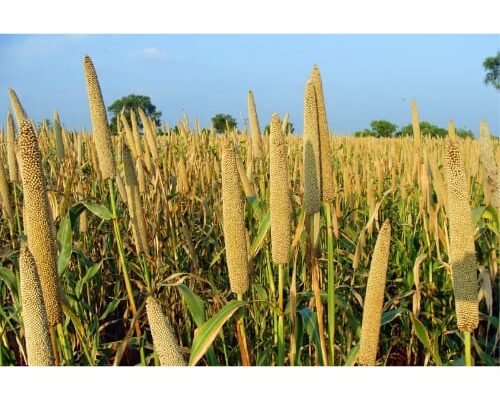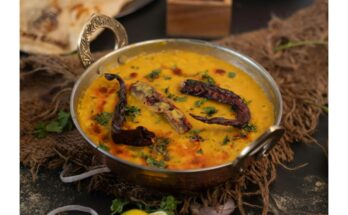Pearl Millet (Bajra) is a native of Africa and is successfully cultivated in India. Among millets, bajra is the predominant crop in India.
The coarse grain contains 8-10 per cent husk. The average chemical composition of bajra grain is as follows: moisture, 12.4; protein, 11.6; fat 5.0; carbohydrate, 67.5; fibre, 1.2; and mineral matter, 2.3. The mineral matter is rich in calcium, phosphorus, and iron. More than 50% of the phosphorus is as phytin, which is a major factor for the poor digestibility of the bajra grain. The protein content of bajra varies from 8.8 to 16.1%. The protein contains a high proportion of prolamine, followed by globulin and albumins. Among the amino acids, tryptophan content is high, and lysine content is average to low. The carbohydrates consist mostly of starch with smaller amounts of sugars (1.2%), pentosans, and hemicelluloses. The starch is composed of 32.1% amylose and 67.9% amylopectin. The grains are rich in thiamine, riboflavin, and niacin.
It is consumed after dehusking and cooked in the same way as rice. More commonly, it is ground into flour and made into chapaties. It is also made into thin porridge. The grain is sometimes eaten after it is parched, the product being similar to pop corn. The grain is suitable for the preparation of malt. An intoxicating drink is obtained from its malted seeds.
Nutritive value per 100 g of Bajra:
Energy (kcal) : 361
Protein (g) : 11.6
Fat (g): 5
Carbohydrates (g) : 67.5
Crude Fibre (g) :1.2
Vitamins:
Carotene (µg) : 132
Thiamine (mg) : 0.33
Riboflavin (mg) : 0.25
Niacin (mg) : 2.3
Folic Acid – Total (µg) : 45.5
Minerals (g) : 2.3
Calcium (mg) : 42
Phosphorus (mg) : 296
Iron (mg) : 8
Magnesium (mg) : 137
Sodium (mg) : 10.9
Potassium (mg) : 307




